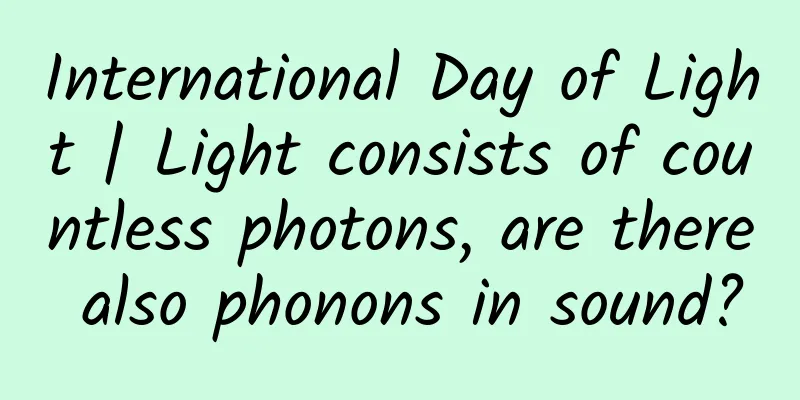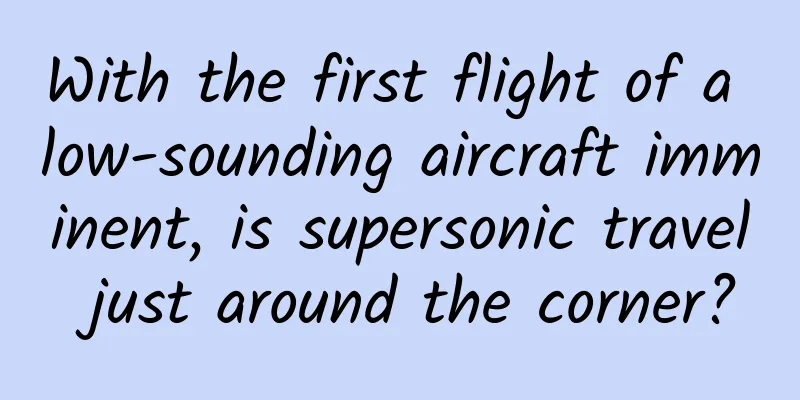International Day of Light | Light consists of countless photons, are there also phonons in sound?

|
We all know that a beam of light contains countless photons. So, does the sound of an explosion also contain countless "phonons"? This is a bit complicated, it's like this... Wait! Is there such a thing as a "phonon"? It has been around since 1932. New discoveries by Chinese researchers In February 2024, the journal Nature Communications published a research result by researchers from the Institute of Physics, Chinese Academy of Sciences, National Center for Nanoscience and Technology and other units. The figure shows two different stacking configurations in three-layer graphene: ABA stacking and ABC stacking. By studying the diamond stacking structure of three-layer graphene, Chinese researchers discovered that in the diamond stacked three-layer graphene, there is a strong interaction between electrons and infrared phonons , which is expected to be applied in fields such as optoelectronic modulators and optoelectronic chips . The coupling between electrons and phonons has long been one of the important research topics in condensed matter physics and is also the theoretical basis for many novel physical phenomena (such as low-temperature superconductivity). Now we know: not only do phonons exist in this world, but phonons are also related to many novel physical phenomena. So, what exactly are phonons? Is it really a particle? What does it look like? What is its relationship with sound and sound waves? … Starting with Photons In order to better understand the origin of phonons and their various properties, let us start with photons. Humans did not initially think that light was composed of photons; they simply thought that light was just light. As many people now believe: Sound is just sound. If we get more specific, sound is just a vibration, a wave. Few people would have thought about whether sound could also contain countless "phonons". Later, some ancient philosophers began to believe that light might be composed of countless particles, but this was just a conjecture. This was the earliest "particle theory", which explained why light always travels in a straight line and reflects. But it could not explain why two beams of light would not separate after colliding with each other. Later, British physicist Newton continued to develop the particle theory of light based on the work of his predecessors. He believed that light is composed of tiny particles, namely photons, which have mass and speed and obey Newton's laws of motion. In 1704, Newton's optical work "Optics" was published, laying the foundation for the particle theory of light. However, this foundation was largely obtained due to Newton's great fame, because as early as 1678, Huygens clearly pointed out that light is a wave. In 1803, British physicist Thomas Young conducted the famous double-slit interference experiment of light. In the experiment, he saw that after light passed through the double slit, interference phenomenon occurred that only waves can experience. So Thomas Young wrote a book to oppose Newton's particle theory, but because Newton was too famous, his opposition failed. Later, James Maxwell appeared. Through studying electromagnetic radiation and light, he found that electromagnetic waves in a vacuum propagate at a constant speed, and this speed is exactly equal to the speed of light. Therefore, Maxwell concluded that light is an electromagnetic wave. After Maxwell's theory was established, German physicist Heinrich Hertz went on to prove with irrefutable experiments that light is an electromagnetic wave. It can be said that one of the major achievements of physics throughout the 19th century was that the wave theory was verified in all optical and electromagnetic phenomena. But at the end of the 19th century, a physical phenomenon that was difficult to explain appeared. This difficult-to-explain phenomenon is the "photoelectric effect". In 1887, Hertz's further experiments found that ultraviolet rays irradiating metal electrodes can produce electric sparks. In other words, light can produce electrical effects. The photoelectric effect was difficult to explain using wave theory until 1905, when Einstein published the paper "An Inspiring View of the Generation and Transformation of Light", which gave a theoretical explanation of the photoelectric effect. Based on this, Einstein proposed the light quantum hypothesis. He believed that a light beam is composed of a group of discrete energy particles, called light quanta , and that the light beam is not a continuous wave. The light quantum proposed by Einstein was later referred to as photon. At this point, those who supported the view that light was a wave had strong experimental and theoretical support. Those who agree that light is a particle also have strong experimental and theoretical support. Finally, the wave-particle debate that lasted for hundreds of years gradually came to an end. People were forced to admit the fact: Light has both the characteristics of waves and particles at the same time, which is the wave-particle duality. Correctly understand the wave-particle duality Ocean waves are a kind of wave, and they can also be seen as composed of countless point particles , that is, water molecules . So is it the same for light? Countless photons form waves, and in this wave, individual photons exhibit particle properties. Is this the wave-particle duality? Not at all. The so-called wave-particle duality means that even a photon is a wave and a particle at the same time! You imagine photons as point particles, but you are wrong! You imagine photons as a wave, wrong! It's only correct if you imagine the photon as some weird combination of a wave and a particle at the same time. But the question is, how can humans imagine such a monster? Yes, it is almost impossible to imagine. Just like, we can't imagine: a purple white strawberry; A small snake like a big river; A cat that is both dead and alive. … This is one of the reasons why the “wave-particle debate of light” lasted for hundreds of years. Not only you, but also those famous scientists in history found it difficult to clearly construct such a monster in their minds in the early days. Perhaps, we can say that the biggest reason why many people find quantum mechanics too obscure and difficult to understand may be: When they first came into contact with the wave-particle duality, they only used the "wave-particle duality" in exams instead of fully integrating it into their own cognition. Condensed matter theoretical physicist Wen Xiaogang once said: "The fourth physics revolution is the quantum revolution. This revolution reveals that the real existence in our world is neither particles nor waves, but both particles and waves." This means that microscopic particles such as photons, atoms, electrons, etc. are a kind of existence, but what was believed in the past to be "existence" was either particles or waves, which is obviously wrong. Quantum mechanics tells us that their true existence is actually like this: both particles and waves. This "existence mode" is indeed difficult to imagine, but this is the real universe we know so far. The true "existence" of microscopic particles is difficult for humans to imagine with their inherent brains that have evolved over hundreds of thousands of years. At this time: Either change the way microscopic particles exist, or change your own cognition. Obviously, the latter is the only way. Schematic diagram to help understand "wave-particle duality", the picture comes from Wikipedia, the author of the picture is Jean-Christophe BENOIST Quantization of sound waves Now that our cognition has changed, understanding phonons will almost become a natural progression. Sound is a kind of wave, and the sound waves that humans can hear are on a macroscopic scale. The question is, if there are sound waves on the macroscopic scale, then is there no sound waves on the microscopic scale? There must be. "Sound waves" on a microscopic scale are generally called " lattice waves ". Everyone is familiar with crystals, which are structures in which atoms, ions or molecules are arranged periodically according to certain rules. This periodic structure within a crystal is called a " lattice ". Amethyst is a type of quartz, which is a silicon dioxide crystal. Image from Wikipedia. Silicon dioxide has many different crystal structures, that is, different lattices, and quartz is just one of them. Other lattices include "lamellar double-layer structure" and so on. The lamellar double-layer structure of a silicon dioxide crystal, top view and side view, image from Wikipedia. In a crystal, the lattice is periodic, but it is not static. The atoms that make up the lattice will experience thermal vibrations. The vibration of the lattice is the collective elastic vibration of all atoms inside the crystal. From the perspective of spatial periodicity, it has the form of a wave, so it is called a "lattice wave". With the word "wave", we can think of "particles". That's right, the quantization of lattice waves is the "phonons" discussed in this article. They are energy quanta that transmit lattice thermal vibrations, which are somewhat similar to the energy quanta "photons" that transmit light waves. In 1932, Soviet physicists first proposed the concept of phonons. Phonons are quasiparticles Phonons have energy and behave like photons and electrons, and have the basic properties of particles. Moreover, phonons can form double-slit interference fringes, which have the properties of waves. Like photons, their existence mode is also wave-particle duality. However, phonons cannot exist independently of the atomic lattice; in a vacuum, phonons do not exist, but photons can exist in a vacuum. So at present, people generally classify phonons as a kind of "quasiparticle", and we can simply think of it as some form of "stand-in" for the particles we are familiar with, because the characteristic behavior is similar. Phonons, like photons, electrons and other particles, have the dual nature of wave and particle, so their existence is essentially the same. Where it can appear and where it cannot appear is not the key point. It is just that different particles have different properties, and the key point is whether their existence mode belongs to wave-particle duality. Although phonons are not as well known to the public as photons and electrons, the study of phonons is an important part of condensed matter physics. Since there are still a lot of extremely fascinating unknowns in the field of "condensed matter", condensed matter physics is currently one of the most active fields in physics. According to incomplete statistics, researchers in this field account for nearly one-third of all physicists in the world. Author: Hanmu Diaomeng, a popular science writer and winner of the "National Excellent Popular Science Work Award" from the Ministry of Science and Technology Reviewer: Luo Huiqian, Researcher, Institute of Physics, Chinese Academy of Sciences Produced by: Science Popularization China Producer: China Science and Technology Publishing Co., Ltd., China Science and Technology Publishing (Beijing) Digital Media Co., Ltd. |
>>: This plant mentioned in "The Legend of Zhen Huan" is gradually dying out
Recommend
Answers to difficult questions about Xiaohongshu operation and promotion!
In view of the fact that everyone had many diffic...
Why are fireworks colorful? Fireworks and firecrackers are actually different
Expert of this article: Chu Yuhao, PhD of Beijing...
What are the functions of the beauty salon mini program and the hairdressing mini program?
Nowadays, the demand for the beauty industry is g...
Reference for advertising data in various channels in the tourism industry!
Industry: Tourism industry Business products: Tou...
Hi nova 11 mobile phone review: The budget is well spent, and its strengths are gaming, photography and battery life
The mobile phone market has entered a highly comp...
Who is this girl?
I believe you have seen such a girl in many place...
Traffic of Baidu mobile news feed increased 20 times in three months. Has content ecology become the new driver of Baidu?
Baidu released its Q3 2016 financial report today...
How to use Baidu video to passively attract traffic!
1. Layout brand words Before using video to attra...
Does the Guangzhou Mini Program Mall need to apply for a business license?
Can an e-commerce business license be used to ope...
The Amazing Abilities of Hummingbirds: How Do They Stay in the Air? What's the Principle Behind It?
Have you ever marveled at the flying skills of hu...
OPPO R17 Pro review: The fog-light gradient color plays with the trend, and the aesthetic triple camera amazes everyone
Photography technology has always been a fiercely...
Detailed explanation of the 7 major factors, what influences the ranking of Baidu search results?
How can I make the information I publish appear o...
Keep user growth tips
The sports and fitness app - Keep, has registered...
AI Product Ranking: In February 2025, the MAU of Chinese AI application Quark exceeded 100 million, leading ByteDance and other competitors
According to recent news, the latest statistics o...


![[Live] DCloud CTO Cui Hongbao: How to quickly convert an H5 website into an App?](/upload/images/67ebd74f70c29.webp)






